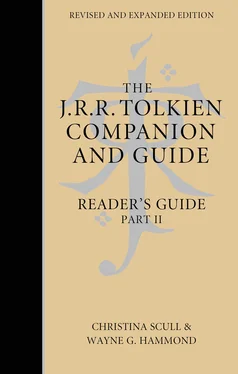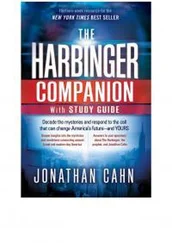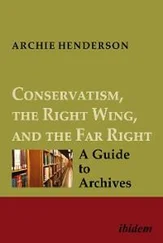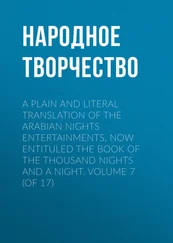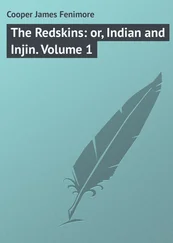1 ...8 9 10 12 13 14 ...29 In summer 1905 Edwin was appointed Resident Secretary (manager) of the Nottingham branch of the Guardian Assurance Company. This further promotion evidently enabled him at last to support a wife. Jane Suffield resigned from her teaching position on 31 May 1905, and she and Edwin were married in Manchester in August of that year. They settled in the village of *Gedling, from which Edwin could commute to Nottingham by train. Their marriage was cut short, however, by Edwin’s death from bronchial pneumonia on 11 May 1909.
Jane subsequently obtained the post of Lady Warden at University Hall, University of St Andrews, the first residence hall for women students in *Scotland (opened 1896). She was later praised for her ‘wise and gentle wardenship’ and for her learning: ‘Her vivid mental life knew no boundaries, her knowledge of English Literature was so vast that one felt she should have been a professor, perhaps of poetry, a scholar and the author of many books. But she loved her own subject best and followed with intense interest its philosophy and new developments all through her life’ (obituary in the St Andrews Alumnus Chronicle , quoted in Andrew H. Morton and John Hayes, Tolkien’s Gedling, 1914: The Birth of a Legend (2008), p. 17). Tolkien visited his aunt in St Andrews on at least two occasions. On one of these, probably in 1910, he made a drawing, St Andrews from Kinkell Brak , and on another, in 1912, he wrote a short poem, The Grimness of the Sea (* The Horns of Ylmir ).
While in St Andrews Jane became close friends with James and Ellen Brookes-Smith (*Brookes-Smith family), whose daughters attended a school in the city. Ellen was a kindred spirit, and in July 1911 the two became joint owners of two farms and adjacent land in Gedling, Church Farm (renamed Phoenix Farm) and Manor Farm, following their auction that March when Jane had independently bid for Church Farm. The 1911 Census, conducted on 2 April, records Jane as a boarder at Church Farm, presumably to look at the property with its tenant farmer, Arthur Lamb.
In late summer 1911 Jane and her nephews, Ronald and *Hilary Tolkien, joined a walking tour in *Switzerland organized by the Brookes-Smiths. In 1912 she resigned her position at St Andrews and moved to Gedling; she is listed in a local directory for 1912 as a ‘farmer’. With Ellen Brookes-Smith she managed and worked Phoenix Farm and Manor Farm. Hilary Tolkien joined them there, having chosen a life in agriculture. Ronald visited his aunt and brother and the Brookes-Smiths at Gedling on several occasions, and made at least three drawings of Phoenix Farm.
The Neave–Brookes-Smith partnership was dissolved in 1922, a result, perhaps, of the deep depression into which English agriculture fell immediately after the end of the First World War. Jane then appears to have lived briefly in Devon before buying another farm, at Dormston, Inkberrow, Worcestershire. Known as Dormston Manor Farm as well as a variety of other names, most notably ‘Bag End’, it comprised just over 200 acres and included among several buildings an early manor house which had been substantially rebuilt in 1582. This was a substantial dwelling, brick at the front and half-timbered at the back, and with three wings. From 1923 until 1927 Jane worked the farm in partnership with Marjorie Atlee, a former pupil who had worked at Gedling as a ‘land girl’ and in 1927 married Jane’s nephew Frank Suffield (son of Mark Oliver Suffield). Jane’s father, John Suffield, spent much time at Bag End in his final years.
In 1931 Jane sold the Bag End farm except for two cottages. She let one of these and lived for a short while in the other (Church Cottage) before moving to Chelmsford in Essex. According to Andrew Morton (see references below), Jane now pursued an interest in medieval mysticism and moved to Chelmsford to be near the Diocesan retreat run by the mystic Evelyn Underhill. In 1937, however, she returned to Church Cottage, where she stayed for ten years. Later she lived in a caravan on Hilary Tolkien’s farm in Blackminster, and finally in Gilfachreda in West Wales with Frank and Marjorie Suffield.
Tolkien wrote of his Aunt Jane to Joyce Reeves on 4 November 1961: ‘The professional aunt is a fairly recent development, perhaps; but I was fortunate in having an early example: one of the first women to take a science degree. She is now ninety, but only a few years ago went botanizing in Switzerland’ ( Letters , p. 308). Asked by Jane earlier that year ‘if you wouldn’t get out a small book with Tom Bombadil at the heart of it, the sort of book that we old ’uns can afford to buy for Christmas presents’, Tolkien assembled * The Adventures of Tom Bombadil and Other Verses from the Red Book (1962). It was published just in time to delight his aunt a few months before her death.
See further, including photographs of Jane Neave, Morton and Hayes, Tolkien’s Gedling, 1914 ; Andrew H. Morton, Tolkien’s Bag End (2009); and Maggie Burns, ‘Jane Suffield’, Connecting Histories website.
Nesbit, Edith(1858–1924). Despite the death of her father when she was three, the English writer E. Nesbit enjoyed a generally happy childhood with her mother and siblings: she was the youngest of five surviving children. Her marriage in 1880 to Hubert Bland was unconventional: both had lovers, and Bland’s two illegitimate children were brought up together with the three surviving children of the marriage. Hubert and Edith were also founding members of the Fabian Society, formed to propagate evolutionary socialism. After Hubert’s death Nesbit married an old friend, Tommy Tucker, with whom she lived the rest of her life. Among Nesbit’s likely lovers, certainly a close admirer, was *R.W. Reynolds, one of Tolkien’s masters at *King Edward’s School, Birmingham. Nesbit dedicated her adult novel The Incomplete Amorist (1906) partly to Reynolds and used his Christian name for one of the Bastables in her children’s fiction.
To supplement family income Nesbit sold poems and juvenile and adult fiction to magazines, much of it hack-work. It was not until she was almost forty that she wrote the first of the children’s stories that brought her fame. Her stories of the Bastable family began to appear in 1897, and were published in book form as The Story of the Treasure Seekers in 1899. Tales of children trying to find ways to make money to amend the fortunes of their impoverished family, they were appreciated by readers of all ages. Further books about the Bastables followed, including The Wouldbegoods (1901) and The New Treasure Seekers (1904). *Roger Lancelyn Green notes in Tellers of Tales: Children’s Books and Their Authors from 1800 to 1964 (rewritten and rev. edn. 1965) that it was from her own ‘holiday life that Edith derived the joyous recollections of childhood’ evident in her work (p. 208). ‘She had, as perhaps no other author has quite possessed it, the power of becoming a child again, of thinking and inventing with her child characters, speaking and writing from their point of view – but with the skill and discrimination of a practised author’ (p. 206). The Railway Children , probably her best known story about ordinary children and their leisure activities, was first published (in book form) in 1906.
In 1900 eight short stories by Nesbit which had appeared in Strand Magazine the previous year were collected in The Book of Dragons . In writing of many of these dragons, comic figures that are no match for their child opponents, Nesbit may have been influenced by ‘The Reluctant Dragon’ by *Kenneth Grahame (1898), and Grahame’s story and Nesbit’s collection may have contributed in turn to the character of Chrysophylax in * Farmer Giles of Ham (1949).
Читать дальше
